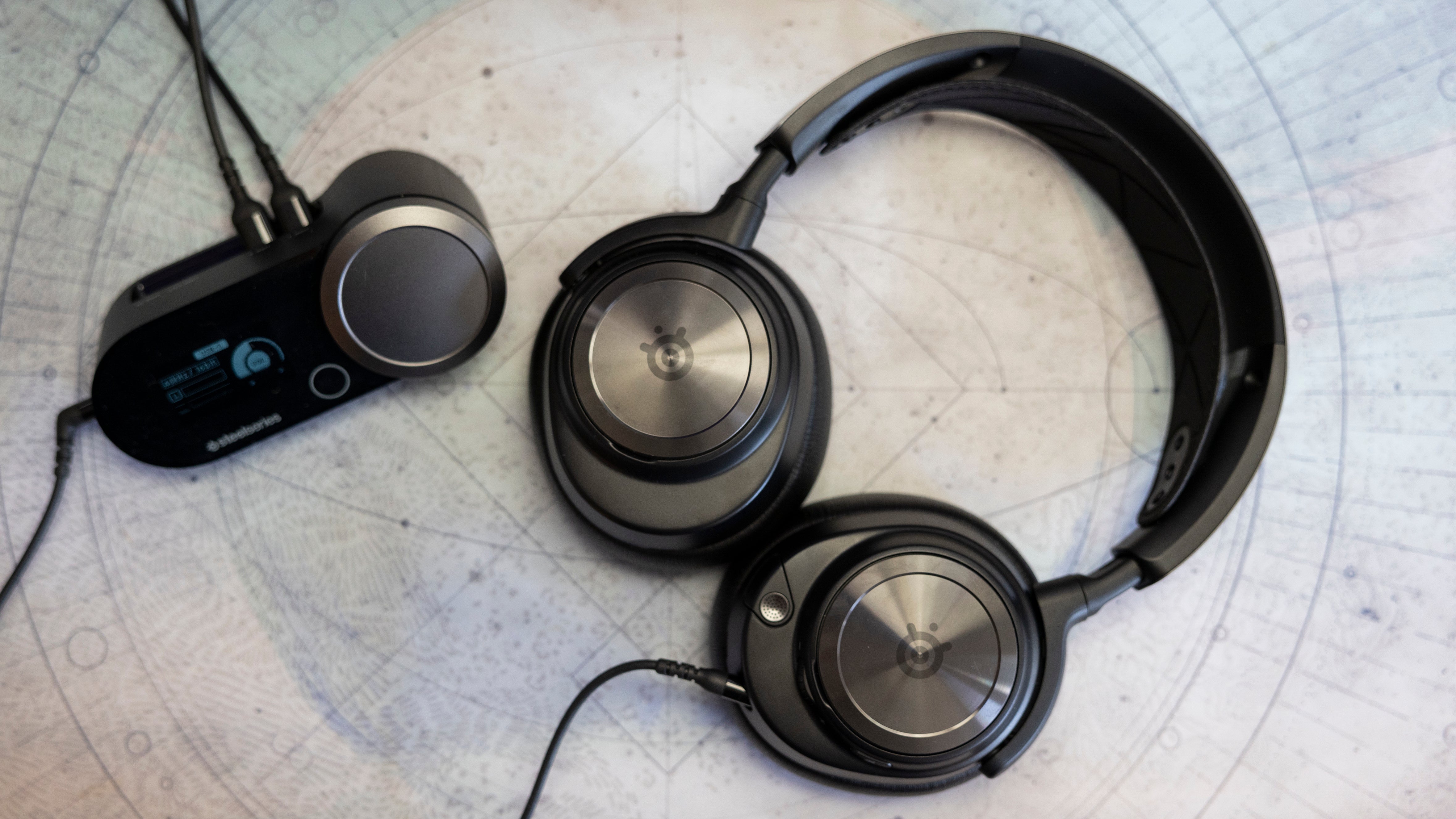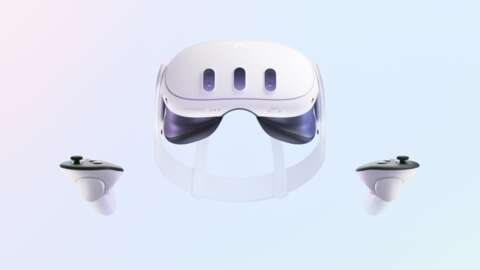
If you're here, you already get that solid audio makes or breaks a gaming session. The tricky bit is actually figuring out which headset deserves a spot on your noggin. Just like shopping for a mouse or keyboard, you've got to weigh up a few things. How much coin are you willing to part with? Do you want booming bass, feather-light comfort, or some flashy features that tickle your fancy?
We've been around the block with gaming audio, so the picks here aren't random guesses. Every headset made the cut for a reason, whether it's because it nails a particular category or just delivers across the board. You'll spot something wallet-friendly like the HyperX Cloud III, and if you're feeling cashed up, the Audeze Maxwell sits at the top end. Then there are the fancy tricks (think virtual surround, noise canceling that shuts out the real world, or EQ sliders for those who love to tinker) all found on wireless contenders like the Razer Kraken V4, Alienware Pro, and Logitech G Pro X 2.
TL;DR: These Are the Best Gaming Headsets:
This guide pulls together the cream of the crop, broken down by categories where certain headsets really shine compared to the pack. That’s not to say there aren’t other beauties out there, but everything listed here has been given the thumbs up by our review crew.
Whether you’re fragging on PC, diving into PS5 exclusives, firing up the Xbox, or chilling with the Switch 2, there’s something here that’ll suit. Just double-check you’re grabbing the right version for your platform. And since this list keeps evolving, it’s worth popping back in whenever you’re hunting for fresh advice on your next headset upgrade.
This guide contains contributions by Danielle Abraham and Michael Higham
1. SteelSeries Arctis Nova Pro Wireless
Best Gaming Headset
The SteelSeries Arctis Nova Pro Wireless is a bit of a show-off, and honestly, it earns the right. It takes everything the old Arctis Pro Wireless did well and dials it up with fresh tricks like active noise canceling and a serious bump in audio quality. Thanks to a four-mic hybrid system, it hushes everything from traffic outside to the droning whirr of a desk fan, so all you’re left with is crisp game audio.
Straight out of the box, the Nova Pro hits you with bold, balanced sound that makes games come alive. Spatial audio is built-in too, meaning you can pick out footsteps sneaking up behind you or nail the distance of an explosion in a shooter. For the tinkerers, the Sonar software and SteelSeries GG app let you mess with EQ and game-chat balance until it’s spot on. After that, going back to a bog-standard pair of cans will feel like a downgrade, unless you’re just catching up on the news or a podcast.
On the design side, this is the biggest shake-up in the Arctis line yet. The Nova Pro Wireless adds telescoping arms to the headband, making it more friendly for bigger heads, while the earcups are sleeker and slimmer for a less "gamer headset" look. Comfort is still classic SteelSeries though, and they’ve kept one of the best features around: the hot-swappable battery system. When one pack runs flat mid-match, you just swap in the spare and keep playing - no cables holding you hostage.
All up, the Arctis Nova Pro Wireless is easily one of the top headsets you can buy today. Killer sound, thoughtful design, and pro-level features make it a stand-out. In fact, our review scored it a rare 10, which says it all really.
2. HyperX Cloud III
Best Budget Gaming Headset
Whichever HyperX Cloud model you end up with, you’re getting a solid bit of kit. But if you’re trying to stretch your dollar, the wired HyperX Cloud III is the one I point people toward. It regularly dips under its $100 tag, and for that price you get cracking audio, a mic that doesn’t sound like it was nicked from a toy headset, and comfort that lasts. Built tough too - this thing’s not going to crumble after a couple of years of late-night marathons.
First impressions? Rock-solid. The aluminium frame feels indestructible, bending and twisting without ever giving off “oops, I broke it” vibes. Slipping it on is dead simple, and you can toss it on the desk without a care. The plush foam earpads wrapped in leatherette keep it comfy, though be warned they can get a bit sweaty, and the clamp is a tad tight for some noggins.
Of course, the main test is sound - and the Cloud III nails it. Footsteps in Valorant were easy to track, and the balanced profile made long sessions in Final Fantasy XIV a joy rather than a chore. The mic also punches well above its weight, so you don’t need to splash out extra cash on a separate one. For a budget-friendly option, it does way more than you’d expect.
3. Audeze Maxwell
Best High-End Gaming Headset
Ask anyone who’s spent time with the Audeze Maxwell whether it justifies the price, and you’ll get the same reply every time: absolutely. It looks more like a classy set of audiophile cans than a flashy gaming headset, and it performs like one as well. Forget the old “wired is always better” line - the Maxwell proves that wireless can deliver the goods.
Its 90mm planar magnetic drivers are the star of the show. Sure, big drivers don’t always guarantee great sound, but here the audio lives up to the specs. You get crystal clarity, well-balanced frequencies, and a natural, rich profile that makes everything from games to music pop. The SteelSeries Arctis Nova Pro may be the all-rounder champ, but if we’re talking pure sound quality, the Maxwell is tough to beat.
Comfort is solid, though it’s definitely on the heavier side. Still, that heft comes with durability - this thing feels like it could survive a drop-kick. It connects via a 2.4GHz USB-C dongle, which makes it a tidy fit for handheld Switch 2 gaming. Pair that with superb audio, strong battery life, and handy extras like toggleable noise isolation, and it’s no wonder people happily cough up the cash.
4. Turtle Beach Atlas Air
Best Wireless Gaming Headset
Turtle Beach has been in the audio game for multiple console generations, and the Atlas Air feels like a new high point for the brand. Comfort is where it really shines, with plush earpads, a feather-light clamp, and a build that somehow balances durability with barely-there weight. The sports mesh-style fabric deserves credit too, keeping heat and sweat from turning long sessions into a slog.
What sets the Atlas Air apart is its open-back design, a rarity in gaming headsets. This gives audio a wide, airy quality that feels richer and more natural than many closed-back rivals. The trade-off, of course, is weaker sound isolation - outside noise will creep in, so it’s best suited to quieter spaces.
On the software side, Turtle Beach’s Swarm app adds extra flexibility with EQ tweaks and presets that actually make a difference. Skip the overhyped Superhuman Hearing, but otherwise the headset handles music, gaming, and spatial audio with impressive finesse. All told, the Atlas Air stands out as one of the most comfortable and best-sounding wireless headsets around right now.
5. Turtle Beach Stealth 500
Best Budget Wireless Gaming Headset
Turtle Beach’s pedigree in gaming audio shows even at the lower end of its range, with the Stealth 500 proving to be a standout budget-friendly option. The design is on the bulkier side, but the flexible headband and sturdy build make it surprisingly comfortable for long sessions, while also reassuringly durable.
Audio performance is where the Stealth 500 delivers the most. High frequencies can sound a touch crunchy, but the strong bass and clean mids give games a rich, full-bodied sound that avoids feeling over-processed. The Swarm software’s Signature Sound preset keeps things simple, and its positional audio holds up well in competitive play - ideal for titles like Counter-Strike 2 where sound can make or break a round.
Despite the lower price, it still comes with Bluetooth and easy device switching at the tap of a button. The microphone isn’t the star of the show, but it’s more than serviceable and can be tweaked in the software. Like any budget headset, there are compromises, but the Stealth 500 nails the fundamentals, making it one of the best-value headsets in its bracket.
6. Beyerdynamic MMX 300 Pro and MMX 330 Pro
Best Wired Gaming Headset
Beyerdynamic has steadily brought its audiophile expertise into the gaming space, and the latest MMX 300 Pro and MMX 330 Pro headsets are proof of that. Both models build on their predecessors with small design tweaks but keep the same studio-grade sound pedigree the brand is known for. Think DT 770 or DT 990 quality, only wrapped in a gaming headset that’s comfortable for hours. The key difference between the two is straightforward: the MMX 300 Pro uses a closed-back design for stronger isolation, while the MMX 330 Pro goes open-back for a wider, more natural soundstage.
Audio performance is only part of the story. The microphone clarity is exceptional, easily rivaling some standalone mid-tier mics, making these headsets well-suited for streaming or recording without extra gear. That level of attention to the mic is rare in gaming headsets and adds serious value for anyone wanting a true all-in-one solution.
Being wired and analog-driven, the MMX line leans into precision and craftsmanship. They sound fantastic straight out of the box, but can scale even further with a DAC or amp for those chasing every ounce of detail. Out of the gate, though, they’re tuned with gaming in mind, emphasizing key effects in competitive titles while still handling music and general use with the finesse expected from headphones in this price bracket.
7. Sennheiser HD 620S
Best Audiophile Gaming Headset/Headphones
Sennheiser has a long history of blending audiophile-grade engineering with gaming practicality, and the HD 620S is a strong continuation of that approach. Known for producing headphones like the iconic HD 598, the company has steadily built a reputation for rich, detailed sound and sturdy yet refined designs. The HD 620S takes those qualities and applies them to a closed-back headset that still manages to feel tailored for gaming.
Built on the same design philosophy as Sennheiser’s premium headphone line, the HD 620S delivers audio that is full, balanced, and highly detailed. While open-back models often excel at spatial audio thanks to their airy soundstage, this closed-back design comes surprisingly close, offering clear positional awareness in competitive titles like Counter-Strike 2 and Valorant. The snug leatherette earcups create excellent natural isolation and remain comfortable through long sessions, though the material does retain heat.
There’s also significant room to push the HD 620S further with proper audio gear. Paired with a DAC or amp, its drivers truly shine, and the included 6.3mm adapter makes that upgrade path easy. For players chasing both audiophile performance and gaming-ready precision, the HD 620S stands out as one of the strongest options on the market.
8. Razer Kraken V4
Best Surround Sound Gaming Headset
The Razer Kraken V4 sits at the top of Razer’s headset lineup, designed with luxury and immersion in mind rather than the stripped-back, competitive focus of the Blackshark V2. Its biggest strength is virtual surround sound, with THX Spatial Audio giving one of the most convincing implementations on the market. Instead of the hollow, echoey effect some headsets produce, the Kraken V4 delivers precise positioning and distance cues, particularly in games and films built around spatial audio. While it’s not the first choice for competitive esports, for cinematic, theater-like sound it’s hard to beat.
The Pro model of the Kraken V4 adds a chunky base station and extras like Sensa haptics, but those features don’t necessarily justify the higher cost. The standard Kraken V4 offers the same excellent audio quality, comfort, and standout surround sound at a more reasonable price, making it the smarter pick for most players looking to elevate their experience without overspending.
9. Asus ROG Pelta
Best Mid-Range Gaming Headset
Finding a solid mid-range headset can be tricky, sitting as it does between budget-friendly compromises and the allure of high-end gear. The Asus ROG Pelta hits a sweet spot, often discounted and consistently delivering strong performance that makes it an appealing pick in this category.
The ROG Pelta recently earned an 8/10 in our review, praised for offering impressive gaming sound and one of the best microphones in the wireless headset space. Comfort is another highlight, making it suitable for marathon sessions without fatigue. Battery life is generous, and in a quiet environment the headset shines even brighter. While higher-end headphones can deliver a wider soundstage, the Pelta stands out among gaming headsets thanks to its balance of features and reliability. In a crowded market, Asus has managed to carve out a clear winner.
10. Razer BlackShark V3 Pro
Best Noise-Canceling Gaming Headset
Razer’s BlackShark V3 Pro represents a major leap over its predecessor, combining premium audio performance with comfort and some of the strongest active noise cancellation available in a gaming headset. The use of sports mesh padding usually sacrifices a good seal compared to leatherette, but here ANC fills the gap impressively, shutting out outside noise without introducing the distortion common in other headsets. Sound remains clean, detailed, and punchy, even with noise cancellation switched on, making it one of the few gaming headsets to truly excel in this area.
The Xbox version sports a sleek black design with green stitching, tying neatly into the platform’s look. Beyond aesthetics, the headset’s broad feature set helps it stand apart: wired analog support, Bluetooth, finely tuned EQ profiles, a responsive microphone, long battery life, 3D audio, low-latency wireless, and intuitive onboard controls. This attention to detail cements its place as a true flagship.
Audio tuning leans toward a balanced profile by default, but with a little adjustment it delivers rich bass and crisp mids, creating an impactful experience in action-heavy titles like Call of Duty Warzone. Stacked up against high-end competition such as the Audeze Maxwell and SteelSeries Arctis Nova Pro, the BlackShark V3 Pro holds its own, securing its spot as one of Razer’s best headsets to date.
11. SteelSeries Arctis GameBuds
Best Gaming Earbuds
Gaming earbuds have quickly become a competitive category, with companies like Razer, Asus, and PlayStation releasing their own takes on the format. The challenge lies in balancing small drivers and limited battery life, which often forces compromises. The SteelSeries Arctis GameBuds stand out for minimizing those trade-offs, delivering performance that rivals full-sized headsets in a compact design.
Strong fundamentals underpin the experience: detailed audio, dependable battery life, and comfort suited for long play sessions. SteelSeries enhances this with a polished mobile app that simplifies customization. Instead of digging through console menus, players can access more than 100 EQ presets with ease, tailoring the sound to different games and genres on the fly.
Some minor quirks exist (features like autoplay and Bluetooth pairing aren’t always seamless) but the GameBuds excel where it matters most. They produce bold, immersive audio that elevates games while doubling as reliable daily earbuds for music. A 2.4GHz USB-C receiver ensures lag-free wireless connections on platforms like PS5 and Switch, further cementing their versatility. When compared to alternatives such as the Razer Hammerheads, the GameBuds distinguish themselves with superior battery life, robust software support, and comfort, making them one of the best-rounded options in the gaming earbud space.
How to Pick the Best Gaming Headset
When shopping for a gaming headset, it’s important to start by narrowing down priorities. Key factors include sound quality, comfort, microphone clarity, durability, wireless performance, and battery life, along with the flexibility of the software suite. While most players want a balance of these features, certain models excel in specific areas, making it worthwhile to weigh what matters most.
Sound quality often stands as the defining feature across all price ranges, though expectations should be managed at the budget end of the spectrum. Driver size can hint at performance, but it’s only part of the equation. Tuning, driver construction, and real-world performance in games or music matter just as much. Paying attention to reviewer feedback on bass, mids, and highs can reveal how a headset truly performs—whether bass overwhelms, mids distort during chaotic gameplay, or highs become sharp at louder volumes. Preferences also play a role, since some players enjoy heavier bass while others prioritize clarity and balance. Ultimately, choosing the right headset comes down to matching these characteristics with personal priorities.

Positional and spatial audio are essential features for competitive play. The best headsets not only reproduce clear frequencies but also convey subtle details that help determine the direction and distance of in-game sounds such as footsteps or gunfire in titles like Counter-Strike 2 and Valorant. This precision enhances immersion in single-player experiences and even movies. While software simulations can provide a version of spatial audio, some, like Turtle Beach’s Superhuman Hearing, often sound artificial and are less reliable.
Comfort is another major factor that can be difficult to gauge without firsthand use. Key considerations include clamp force, earpad density, headband design, and the choice of material—leatherette, sports mesh, and velour each offer trade-offs between isolation, breathability, and sweat management. Durability should also be kept in mind. High-end headsets often feature sturdy aluminum frames that can handle extended use, though they may add weight. On the other hand, flexible plastics in more affordable headsets provide resilience against bending or twisting. A well-built headset should balance comfort and durability without feeling fragile during daily wear.

Built-in microphones on gaming headsets are often treated as secondary features, but clarity and noise handling can make a significant difference. While standalone microphones usually provide superior audio quality, certain headsets stand out in this regard. The HyperX Cloud III, for example, delivers surprising clarity at a mid-tier level, while Beyerdynamic’s MMX 300 Pro offers performance approaching that of dedicated microphones. For players who rely heavily on voice communication or engage in content creation, a strong headset mic is invaluable. Key factors to watch include noise isolation, pickup accuracy, and software features such as noise gate controls. Sidetone support is particularly useful, feeding audio feedback to the user for more natural conversations.
Battery life has also become a non-issue for many wireless headsets, with most models lasting around 40 hours per charge and premium designs reaching up to 80 hours under ideal conditions. For headsets that double as multi-device solutions through simultaneous Bluetooth connections, extended battery life becomes especially important. Beyond the hardware, software plays a vital role in customization. Suites like Turtle Beach’s Swarm provide access to EQ adjustments, preset profiles, and microphone controls, ensuring users can fine-tune performance. While not as critical as sound quality or comfort, robust software support maximizes the value and versatility of a gaming headset.
Gaming Headset FAQ
How do you determine sound quality on a gaming headset?
While lab tools like artificial ears and frequency analysis software can measure how a headset handles sound, they don’t capture the full listening experience. Audio performance is ultimately subjective, and technical data only paints part of the picture. Reviewers often rely on descriptors such as distortion, drowning, cleanliness, or balance to communicate how a headset performs across frequencies. These terms may feel abstract, but they help illustrate real-world listening nuances that raw measurements cannot convey. In the end, trusting a reviewer’s trained ear and experience provides valuable context for understanding how a headset will actually sound during games, music, or movies.

Driver size is another factor to consider, as larger drivers often provide the potential for cleaner, more powerful sound. However, size alone does not guarantee overall quality. Much depends on tuning, construction, and how the headset handles spatial or positional audio. The latter plays a key role in competitive play by conveying distance and direction of sound effects, while also enhancing immersion in single-player games, movies, or music. A well-designed headset balances these elements, ensuring that bigger hardware translates into a fuller and more engaging audio experience.
What makes gaming headsets different from headphones?
Gaming headsets usually throw in extra features designed to boost your play sessions. Some of these add-ons are a bit gimmicky, but plenty of them are genuinely useful. Take microphones for example. Not everyone wants a chunky standalone mic cluttering the desk, and that is where headsets shine. The built-in mic is what truly sets a headset apart from regular headphones.
Most mics on gaming headsets are serviceable enough for in-game chatter, but a few models step things up with sharper clarity and better noise control. That means your teammates hear you clearly without the background racket sneaking through.

Quality gaming headsets are usually tuned to highlight key sound effects and deliver a closer, more personal soundstage. After all, in games you're an active player, not just a passive listener, and that difference really matters in competitive matches.
On the wireless front, most gaming headsets rely on 2.4GHz USB dongles to keep latency down to a bare minimum, a feature you rarely see in standard wireless headphones. Add to that the software packages that come with USB-based headsets, and you often get advanced tools for tailoring sound profiles to specific games or scenarios.
Should I go wired or wireless for a gaming headset?
It really comes down to individual needs. Wired headsets and headphones often appeal to those who prefer the sound profile of a finely tuned analogue device, and they never need recharging.
On the other hand, modern wireless gaming headsets have advanced to the point where battery life and latency are rarely a concern. Many also come with companion software and apps that allow users to customise EQ settings or swap sound profiles, making it easy to optimise audio for different types of games.

Wireless headsets often support multi-device connectivity and simultaneous Bluetooth, making them highly versatile and handy for quick switches to mobile devices. While they generally come with a higher price tag, the added flexibility and convenience can make them well worth the investment, provided the features align with what you actually need.
Is virtual surround sound worth seeking out?
Virtual surround sound started out feeling like more of a gimmick, with high-end headphones trying to mimic a 7.1 speaker setup. The tech has improved a lot since then, though it is not always the best fit for competitive gaming, where its artificial qualities can sometimes throw off directional cues. That said, when implemented well through systems like DTS Headphone:X or Dolby Atmos, it can deliver an impressive, cinema-like experience, particularly in action-heavy games and films.
Some virtual surround software requires a paid license, and the overall usefulness is still fairly niche. Compatibility also does not guarantee quality. Even if a headset supports Dolby Atmos or DTS Headphone:X, the hardware itself needs to have the range and nuance to make the effect convincing.
Sign up to get the best Aussie gaming deals sent straight to your inbox!















